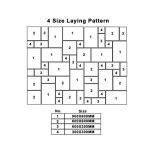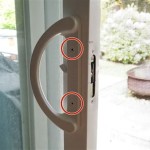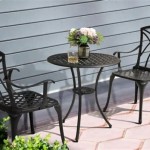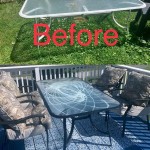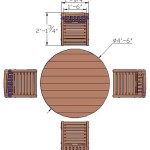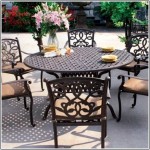Ways To Cover Patio Doors
Patio doors, while offering desirable access and expansive views, can present challenges in terms of privacy, light control, and energy efficiency. Selecting the appropriate window treatment is therefore crucial to maximizing the functionality and aesthetics of these large openings. Consideration should be given to the room's purpose, the desired level of light filtration, and the overall design aesthetic.
Several factors influence the choice of patio door covering. These encompass the door's direction (east, west, north, or south), which affects sun exposure and heat gain; the architectural style of the home; and the homeowner's budget. Analyzing these factors ensures that the chosen covering meets both functional and aesthetic requirements.
Vertical Blinds
Vertical blinds represent a classic and practical solution for patio doors. Constructed of vertical slats made from vinyl, fabric, or wood, these blinds offer a wide range of adjustability, enabling precise light control. The slats rotate open and closed, allowing for varying degrees of light filtration and privacy. When fully open, the slats stack neatly to the side, providing unobstructed access to the patio.
The material selection significantly impacts the overall appearance and performance of vertical blinds. Vinyl blinds are a cost-effective and durable option, resistant to moisture and easy to clean. Fabric blinds introduce a softer texture and wider range of colors and patterns. Wood blinds offer a more luxurious and sophisticated aesthetic, although they require more maintenance and are susceptible to moisture damage. Aluminum vertical blinds are durable and resistant to corrosion, making them a good choice for high-traffic areas.
Installation of vertical blinds is typically straightforward, involving mounting a headrail above the door frame from which the slats are suspended. The headrail can be mounted inside the frame for a cleaner look or outside the frame to maximize light blockage. Regular cleaning with a damp cloth or vacuum cleaner attachments helps maintain the appearance of vertical blinds.
One notable advantage of vertical blinds is their ability to cover wide expanses, making them ideal for large patio doors. Their vertical design also emphasizes the height of the room, creating a feeling of spaciousness. However, some individuals find the appearance of vertical blinds outdated, and the slats can sometimes be noisy in windy conditions.
Sliding Panels
Sliding panels, also known as panel track blinds, offer a contemporary and streamlined alternative to traditional vertical blinds. These consist of wide panels of fabric that slide horizontally along a track. When open, the panels stack neatly behind each other, minimizing obstruction of the view. When closed, they provide complete privacy and light blockage. These are often made of woven wood, solar screen fabrics or room darkening materials.
Sliding panels are available in a variety of fabrics, colors, and patterns, allowing for customization to complement diverse interior design schemes. Opaque fabrics provide maximum privacy and light control, while sheer fabrics allow filtered light to enter the room. Woven wood options introduce a natural texture and earthy aesthetic.
The operation of sliding panels is smooth and effortless, making them a user-friendly option for all ages. The panels can be operated manually with a wand or cord, or with motorized systems for added convenience. Motorization allows for remote control operation, which is particularly beneficial for hard-to-reach patio doors.
Installation involves mounting a track system above the door frame. The number of panels required depends on the width of the door opening and the desired level of overlap. Regular dusting or vacuuming helps maintain the cleanliness of sliding panels. Stains can be spot-cleaned with a mild detergent and damp cloth.
A key benefit of sliding panels is their modern and minimalist aesthetic. They offer a clean and uncluttered look that complements contemporary architectural styles. However, they may not be suitable for all types of patio doors, particularly those with unusual dimensions or obstructions.
Drapes and Curtains
Drapes and curtains introduce softness, elegance, and a wide range of design possibilities to patio door coverings. Fabrics such as linen, cotton, velvet, and silk offer different levels of light filtration, insulation, and texture. The choice of fabric depends on the desired aesthetic and functional requirements.
Drapes typically reach the floor, creating a dramatic and luxurious effect. Curtains can be shorter, ending at the windowsill or just below the frame. Blackout curtains provide maximum light blockage, ideal for bedrooms or media rooms. Sheer curtains allow diffused light to enter the room while maintaining a degree of privacy.
The style of drapery heading, such as pinch pleat, grommet, or rod pocket, significantly impacts the overall appearance. Pinch pleat headings create a tailored and formal look, while grommet headings offer a more contemporary and informal style. Rod pocket headings are a simple and versatile option.
Installation of drapes and curtains involves mounting a rod or track above the door frame. The length of the rod should extend beyond the width of the door to allow the drapes to be fully opened without obstructing the view. Regular washing or dry cleaning is required to maintain the cleanliness and appearance of drapes and curtains.
Drapes and curtains provide excellent insulation, helping to reduce heat loss in the winter and heat gain in the summer. They also absorb sound, improving the acoustics of the room. However, they can be more expensive than other patio door covering options, and they require more maintenance.
Cellular Shades
Cellular shades, also known as honeycomb shades, are recognized for their energy-efficient design and versatility. Constructed from cellular fabric that forms a honeycomb shape, these shades trap air, providing insulation against heat and cold. This characteristic results in reduced energy consumption and improved comfort levels within the home.
Cellular shades are available in a variety of cell sizes, fabric opacities, and colors, allowing for customization to suit specific needs and preferences. Single-cell shades offer basic insulation, while double-cell and triple-cell shades provide enhanced thermal performance. Light-filtering fabrics allow diffused light to enter the room, while blackout fabrics offer complete light blockage.
The operating systems for cellular shades include cordless, continuous cord loop, and motorized options. Cordless operation eliminates the risk of tangled cords, making them a safe choice for homes with children and pets. Continuous cord loop systems provide smooth and easy operation, particularly for large or heavy shades. Motorized systems offer the ultimate convenience, allowing for remote control operation and integration with smart home systems.
Installation of cellular shades is typically straightforward, involving mounting a headrail inside or outside the door frame. Regular dusting with a soft brush or vacuum cleaner attachment helps maintain the cleanliness of cellular shades. Stains can be spot-cleaned with a mild detergent and damp cloth.
A key advantage of cellular shades is their energy efficiency, which can lead to significant savings on heating and cooling costs. They also offer excellent sound absorption, reducing noise levels within the room. However, they may not be as durable as some other patio door covering options, and they can be susceptible to damage from moisture.
Roman Shades
Roman shades offer a stylish and sophisticated alternative to traditional shades. Constructed from a single piece of fabric that folds up into horizontal pleats when raised, Roman shades provide a clean and tailored look. They are available in a wide range of fabrics, colors, and patterns, allowing for customization to complement diverse interior design styles.
Flat Roman shades maintain a smooth and flat appearance when lowered, while hobbled Roman shades feature a series of cascading folds. Relaxed Roman shades have a softer and more casual appearance, with the fabric slightly draping at the bottom. Each style offers a different aesthetic and level of formality.
The operating systems for Roman shades include corded, cordless, and motorized options. Corded systems are the most traditional, while cordless systems offer a cleaner look and improved safety. Motorized systems provide the ultimate convenience, allowing for remote control operation and integration with smart home systems.
Installation of Roman shades involves mounting a headrail inside or outside the door frame. The fabric is attached to the headrail and controlled by cords or a motor. Regular dusting or vacuuming helps maintain the cleanliness of Roman shades. Stains can be spot-cleaned with a mild detergent and damp cloth.
A key benefit of Roman shades is their elegant and sophisticated aesthetic. They add a touch of luxury to any room and can be customized to match a variety of design styles. However, they can be more expensive than some other patio door covering options, and they may not provide as much insulation as cellular shades.
Plantation Shutters
Plantation shutters represent a classic and timeless choice for patio door coverings. Constructed from solid wood or composite materials, these shutters feature wide louvers that can be adjusted to control light and privacy. Their durable construction and elegant design make them a valuable addition to any home.
Plantation shutters offer exceptional light control, allowing for precise adjustments to the amount of sunlight entering the room. The louvers can be tilted open, closed, or angled to achieve the desired level of light filtration and privacy. When fully closed, they provide complete darkness and privacy.
Installation of plantation shutters involves mounting a frame around the door opening. The shutter panels are then hinged to the frame, allowing them to swing open and closed. The louvers are controlled by a tilt rod, which can be hidden or visible, depending on the desired aesthetic.
Plantation shutters provide excellent insulation, helping to reduce heat loss in the winter and heat gain in the summer. They also add value to the home and can be a selling point for prospective buyers. Regular dusting with a soft cloth helps maintain the cleanliness of plantation shutters. They can be painted or stained to match the existing décor.
A key advantage of plantation shutters is their durability and longevity. They are built to last and can withstand years of use. Their classic design also ensures that they will remain stylish for years to come. However, they can be more expensive than other patio door covering options, and they require professional installation.

How To Find The Best Patio Door Window Treatments Pella

8 Patio Door Covering Ideas Coverings Doors

Faq On Covering Doors Our Top Answers Tips

Door Blinds For Sliding Glass Doors French

The Best Ways To Cover Patio Or Sliding Glass Doors Made In Shade

11 Best Sliding Door Blinds Ideas Coverings Window Treatments

Patio Doors Best Door Shades Sheers Coverings

Patio Door Covering Solutions Fresh Space Redesign

Door Blinds For Sliding Glass Doors French

Window Coverings For Sliding Glass Doors


